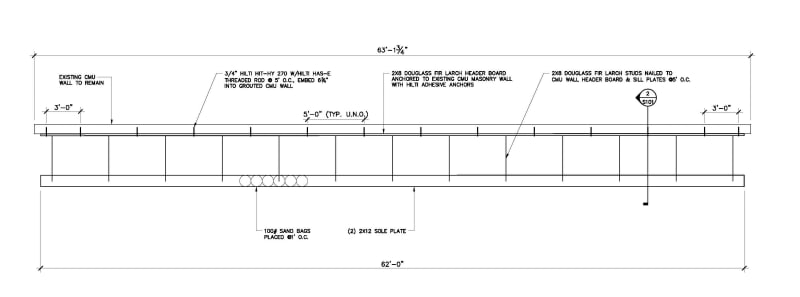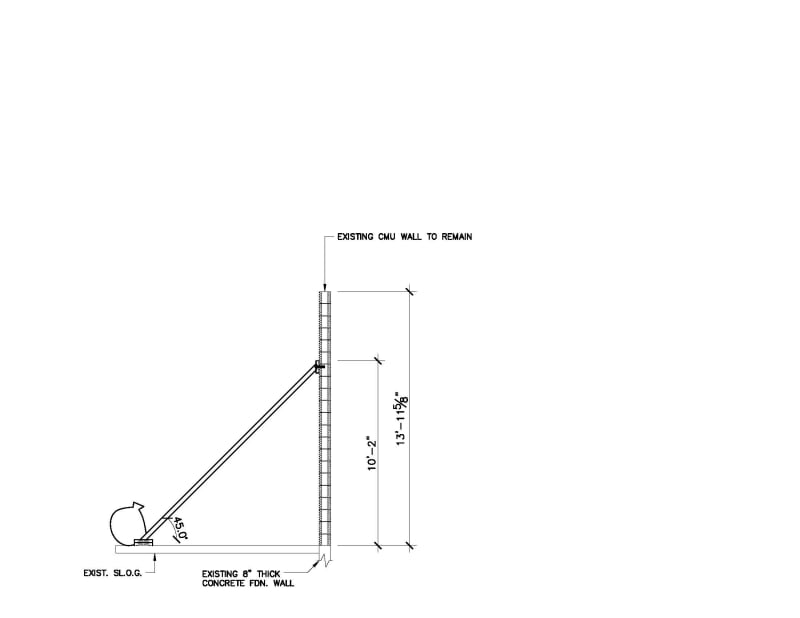Hello all, I'm hoping someone here can look at my methodology of reinforcing an existing CMU wall for a new building construction. The plan is to demolish the East, West, and South walls but maintain the North most wall for the new building construction, as well as the slab of the original building. For conservativeness, I'm attempting to design for this CMU wall to act as a cantilever out of the ground and apply wind load against the face of it at a uniform 20psf, however with the wall being at 14' tall the loads applied seem to be a bit too much to just be resisted with some sand bags on the bottom sole plates. I've attached a PDF with a quick CAD sketch of the condition as well as the original temporary shoring idea I had.


The main concern I'm having is figuring out a proper way to secure the bottom sole plates in a way that they can handle the potential resulting load - approximately 280lb/ft in the x and y directions - seeing that all I have below is a 5" thick slab that I would like to avoid having to place a multitude of anchors into if I can help it. Any thoughts or insight into the matter would be greatly appreciated.
As an EIT, I'm open to being wrong now if it means being right when it counts.


The main concern I'm having is figuring out a proper way to secure the bottom sole plates in a way that they can handle the potential resulting load - approximately 280lb/ft in the x and y directions - seeing that all I have below is a 5" thick slab that I would like to avoid having to place a multitude of anchors into if I can help it. Any thoughts or insight into the matter would be greatly appreciated.
As an EIT, I'm open to being wrong now if it means being right when it counts.
